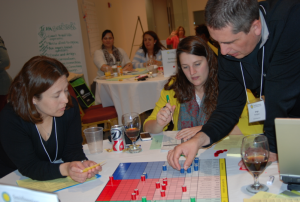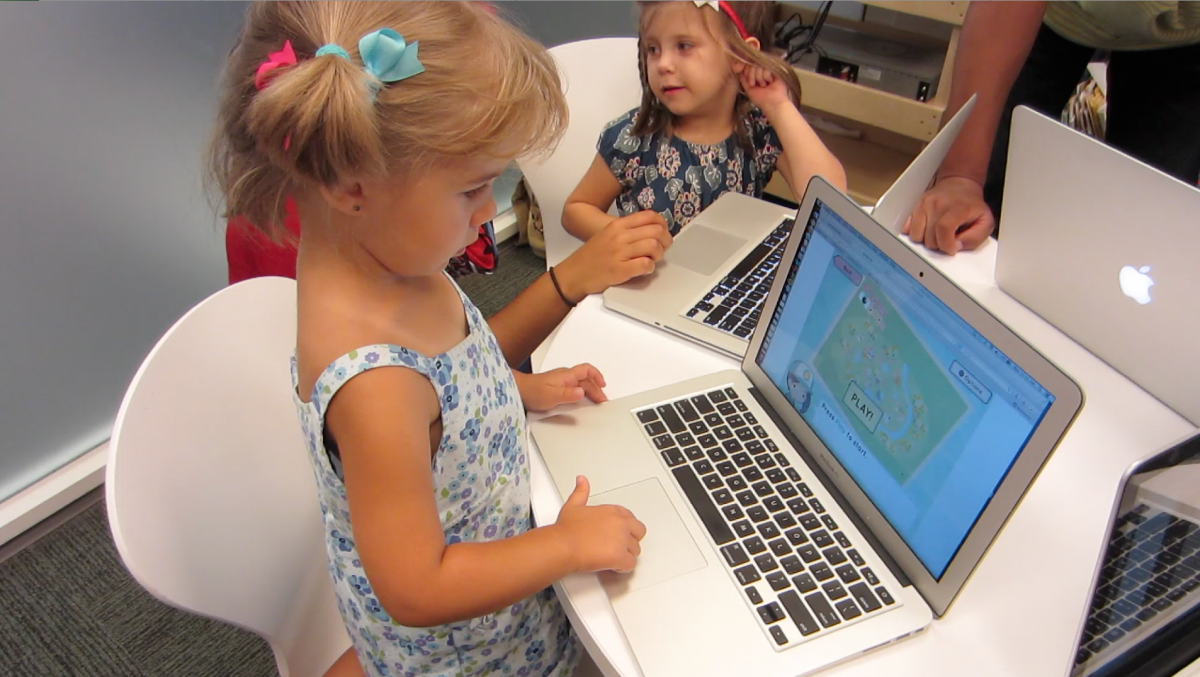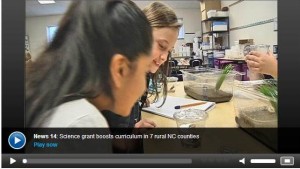Wednesday, March 5, 2014
Why is the Black Sea black?
The sea was first named by the ancient Greeks who called it "Inhospitable Sea." The sea got this reputation because it was difficult to navigate, and hostile tribes inhabited its shores. Later, after the successful development of the coast by Greek colonists, the sea was renamed "Hospitable Sea."
The Black Sea has a depth of over 150 meters, and its waters are filled with hydrogen sulfide for almost two kilometers. Therefore, in the deepest layers of its water there are no living things except sulfur bacteria.
Read More
Tuesday, March 4, 2014
At the end of January, 82 administrators, teachers, and community members, representing 21 Houston Independent School District (HISD) schools participated in a five-day Strategic Planning Institute (SPI). As part of the LASER i3 project, participating Phase 1 & Phase 2 schools and districts have the opportunity to attend SPIs that are tailored to meet the unique needs of their regions.

Read More
Thursday, February 13, 2014
Love Valentine's Day? Love science? Then we have you covered! Check out our Valentine's Day Science Pinterest board for an assortment of Valentine's Day themed science activities, experiments, jokes, cards, and more.
Read More
Wednesday, January 29, 2014
"The focus of our training was to make us more comfortable with our general knowledge of science. Part of this is realizing that we don't need to have all the answers. What we do need to know is where to go to find them." --2013 SSEATs attendee
Suzanne Wilson's review article "Professional Development for Science Teachers" (Science, 2013) identifies the top five characteristics of effective professional development (PD) programs as:
Read More
Monday, January 27, 2014
Dr. Robyn M. Gillies is a professor in the School of Education at The University of Queensland, Brisbane, Australia. For over 20 years, she has researched the effects of cooperative learning on students' learning in science, mathematics, and social science content areas at the elementary and secondary levels. She has researched inquiry-based science in the classroom and has published her findings in many international journals, including the International Journal of Educational Research, Pedagogies: An International Journal, and Teaching Education. The extent of Dr.
Read More
Wednesday, January 15, 2014
What drives a student's interest in STEM? Some people believe that these concepts come naturally to certain individuals, thinking that the "math gene" or the "science gene" gets bestowed on the lucky ones, like the tooth fairy leaving a quarter under their pillow. While this may have been believable at one time or another, now students have access to countless channels of information, STEM subjects are becoming a higher priority in classrooms, and learning is evolving into more of a fun activity.
Read More
Wednesday, December 18, 2013
Where does rain come from? Where do puddles go? How are plants and animals the same? How are they different? What makes objects go fast or slow? Helping young students answer these questions by encouraging their natural curiosity is a no-brainer for engaging them in science explorations. This is one of the goals of the newest set of science curriculum developed by the SSEC.

Read More
Wednesday, December 11, 2013
I'm sure we've all been asked, "How did you spend your summer vacation?" We usually describe the obligatory family trip, visits to the community pool with the kids or--if you're really creative and not averse to making things up--wolverine hunts in Alaska with your uncle (Napoleon Dynamite fans will understand).
Read More
Wednesday, December 4, 2013
Recently the Professional Services Division at the SSEC sat down for the second of our new Journal Club meetings. Building off of our last discussion of the SSEC's "LASER" (Leadership and Assistance for Science Education Reform) model, we read Christopher L.
Read More
Amy D’Amico, PhD, joined the SSEC in 2013 as the Division Director of Professional Services. She oversees professional development and leadership development initiatives at SSEC. Prior to joining the SSEC, Amy was a member of the faculty in the biology department at Georgetown University. At Georgetown, she taught a variety of biology courses and co-directed the RISE & Teach program for biology undergraduates who complete a thesis while teaching in the District of Columbia Public Schools.
Read More
Marjee is the Director of Evaluation and Editorial Development at Howard Hughes Medical Institute. Marjee previous worked at the Smithsonian Science Education Center as the Division Director of Curriculum and Communications. Marjee has an undergraduate degree in chemistry and a master's degree in curriculum design, both from Marquette University. Her PhD is from George Mason University in Educational Research and Evaluation Methods.
Read More
Kate Echevarria is the Human Resources Liaison for the Smithsonian Science Education Center. She is responsible for handling recruitment, internships, performance management, and all aspects of human resources at the Center. She was previously the Executive Office Manager at SSEC for 10 years. Prior to SSEC, Kate was in human resource management having worked for an international hotel chain, the U.S. Government, and a science non-profit.
Read More
Inola Walston is the Assistant Division Director of Advancement and Partnerships for SSEC. Inola has nearly 30 years of fundraising and non-profit experience. As the Assistant Division Director for Advancement and Partnerships, Inola composes and drafts detailed proposals and correspondence to donors and prospects; prepares reports and marketing materials; participates in cultivation, solicitation and stewardship activities; and assists in the planning, management, and execution of special events and educational experiences to maintain donor engagement.
Read More
Katherine Pedersen Blanchard is Assistant Division Director of Professional Services at the SSEC where she has managed programs and led initiatives across the United States and around the world. Katherine works with teachers, schools, districts and communities to build support for science and STEM education that intersects with social issues and sustainable development. She is passionate about connecting people who are doing this work across geographic borders, disciplines, and generations.
Read More
Katie Gainsback is Assistant Division Director of Professional Services. In this role, she manages programs promoting inquiry-based learning and STEM education across the United States for science teachers, administrators, and community partners. Most notably this work includes the Smithsonian Science for North and South Carolina Classrooms program, funded by a $4.5 million grant from the U.S. Department of Education. Before joining the Smithsonian in 2012, Katie facilitated school and public programs in informal education spaces including the National Geographic Museum and at the U.S.
Read More
Brian Mandell, PhD, is the Division Director of Curriculum and Communications for the SSEC. In this role, he provides support and direction for the talented Curriculum and Communication staff in the development of world-class print and digital curricular resources.
Read More
Wednesday, November 20, 2013
Absolute excitement. That is how I would describe the atmosphere of the Smithsonian's Teachers' Night on Friday, November 15. For those who are not familiar, Teachers' Night is a special night for educators to find new resources to use in the classroom and attend demonstrations showcasing Smithsonian programs and materials.
Read More
Wednesday, November 13, 2013
Last week SSEC's Professional Services Division held our first Journal Club meeting. The Journal Club serves as an internal Professional Learning Community (PLC) to keep the Professional Services staff up to date with current research in the areas of professional development, educational policy, standards, and scientific literacy, just to name a few! As this was our first meeting, we decided to start at the beginning with the SSEC's seminal text Science for All Children.
Read More
Saturday, November 9, 2013
A little over two years ago, more than 90 participants from the seven LASER i3 North Carolina districts gathered in Greensboro, NC for an intensive 5 1/2-day Strategic Planning Institute (SPI). During their time together, seven district leadership teams created comprehensive strategic plans aimed at transforming science education in their districts.
Read More
Wednesday, October 30, 2013
In recent years, Pinterest has grown to be one of the most influential social platforms on the Internet. According to Mediabistro, Pinterest hit 10 million unique visitors faster than any site in history and has grown by over 2,000% since May 2011. Pinterest boasts some pretty amazing statistics proving that it is the ultimate tool used for gathering and organizing content found on the web.
Read More
Wednesday, October 23, 2013
As states adopt the Next Generation Science Standards (NGSS), everyone is wondering about what the assessments will look like. This is not because everyone is suddenly fascinated with the finer points of educational measurement, but because assessment is often known as the "tail that wags the dog" of education; it has a disproportionately large impact on curriculum, instruction, and outcomes.
Read More
Friday, October 18, 2013
Effective science education is, in itself, an innovation engine and more urgently needed now than ever before to address such major issues as climate change, national security, conservation of resources, disease epidemics and other health threats, trade, and more. In President Obama's words, "... we know that the nation that out-educates us today will out-compete us tomorrow. And I don't intend to have us out-educated" (Obama, 2009).
Read More
Tuesday, October 15, 2013
After News 14 Carolina did a great story on the LASER i3 Summer Professional Development, they wanted to come back for more! Linnie Supall visited Princeton Elementary School and did a great piece on how the students are now interacting with the curriculum. "I've seen a lot of little girls now say, 'I might want to be a scientist when I grow up. I might want to be a biologist and study the fish in the ocean'" Bridgers said.

Check out the rest of the story here.
Read More
Wednesday, October 9, 2013
Instead of teaching young people about science, we want them to do science. That’s one of the central notions in teaching science as inquiry and it’s a core part of the Next Generation Science Standards. Said that way it sounds simple, but when we step back and try to articulate exactly what doing science means it becomes a bit tricky. Is it collecting data? Is it developing research questions? Is it defending and advancing arguments based on evidence? The short answer to each of these questions is “Yes, and…”.
Read More
Thursday, September 19, 2013
New learning standards are designed to keep up with the changing needs of new generations of schoolchildren. By that measure, New York University Professor Okhee Lee sees the Next Generation Science Standards (NGSS) as a success.
Read More


